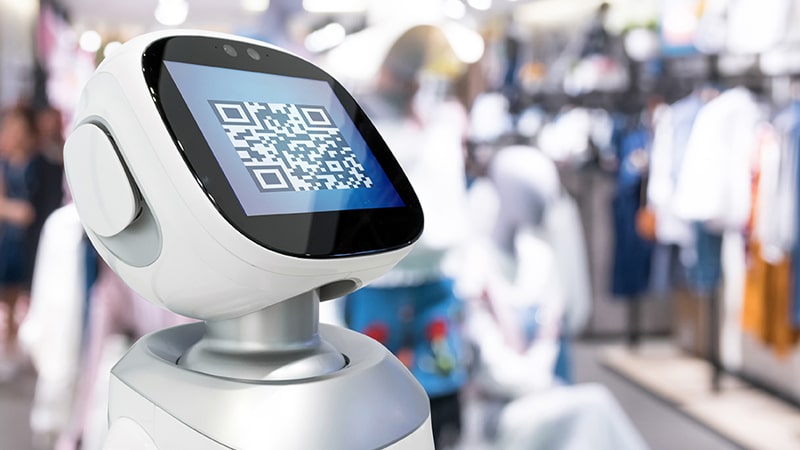COVID-19 has changed the way we shop. In this episode, we talk to XRC Labs founder Panos Anthos about the pandemic’s impact on the retail industry.
Episode Summary
The COVID-19 pandemic has forced consumers to adjust to a new normal in shopping. Demand for retail options like curbside pickup and online ordering has skyrocketed. How are retailers adapting to these new consumer shopping behaviors? In this episode, Pano Anthos, founder of XRC Labs, a retail-focused accelerator, discusses COVID-19’s impact on the retail industry.
The views, information, or opinions expressed during DeCoded by GS1 US podcast series are solely those of the individuals involved and do not necessarily represent those of GS1 US, its employees or member companies. The podcast series is provided by GS1 US as a convenience and does not constitute or imply an endorsement, recommendation, or favoring by GS1 US of any of the identified companies, products, or services. GS1 US does not warrant or guarantee any of the products or services identified here, nor does it assume any legal liability or responsibility with respect to them.
About Pano Anthos
Pano Anthos leads XRC Labs as its Founder and Managing Director. Having founded four startups around key platform shifts, he saw the seismic shift coming to retail, and with the right vision and timing, recruited Parsons School of Design and Kurt Salmon as part of Accenture Strategy to be founding sponsors. Now with 80 accelerated startups, 10 active world-class retail sponsors, 250+ business mentors, Pano has built a world-class ecosystem for retail and consumer goods innovation at XRC Labs. He speaks regularly at NRF national and regional meetings, Shoptalk, and RILA executive conferences. He leverages a deep startup network in Silicon Valley, New York, and Boston to fuse leading technology, e-commerce and user experience innovations to existing customer-oriented businesses.
About Pano Anthos

Pano leads XRC Labs as its Founder and Managing Director. Having founded 4 startups around key platform shifts, he saw the seismic shift coming to retail and with the right vision and timing recruited Parsons School of Design and Kurt Salmon a part of Accenture Strategy to be founding sponsors. Now with 80 accelerated startups, 10 active world-class retail sponsors, 250+ business mentors, Pano has built a world-class ecosystem for retail and consumer goods innovation at XRC Labs.
About Reid Jackson

As Vice President, Corporate Development, Reid Jackson helps leads the investigation of new technologies, partnerships and business opportunities to increase the relevance and reach of GS1 Standards. Drawing on his extensive IT background and experience implementing solutions for both large and small corporations in retail, grocery, healthcare and manufacturing, Mr. Jackson helps lead the exploration of collaboration opportunities to help businesses leverage emerging technologies including the Internet of Things (IoT), blockchain, artificial intelligence, machine learning and computer vision.
Related Content

WhitepaperAutonomous Retail
Download the paper to learn how GS1 Standards and emerging technologies can improve inventory visibility and fulfillment in an age of rising omnichannel complexity.

BXP MagazineStreamlining On-Pack Barcodes for Limitless Consumer Engagement Opportunities
GS1 Digital Link allows brands to web-enable barcodes to provide consumers with rich product information and experiences, while being useful for retailer business process, too.

Washington PostShoppers are panic-buying toilet paper. This time, there should be enough to go around.
Retailers and manufacturers are less panicked about the high-demand for products caused by pandemic surges because of efforts to simplify their supply chains.
Suggest a Guest
Know someone who would be a great guest on the DeCoded by GS1 US podcast? Submit your suggestion here!